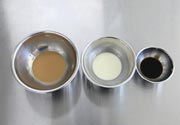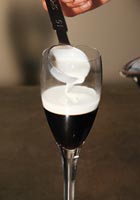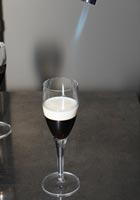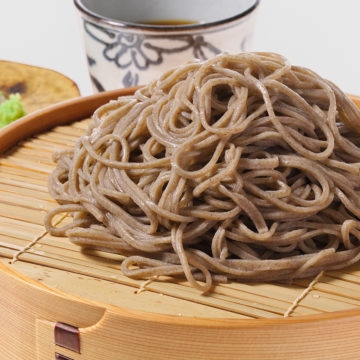
Soba — Buckwheat Noodles
Please see changes in procedures made to protect visitors against the spread of the coronavirus.
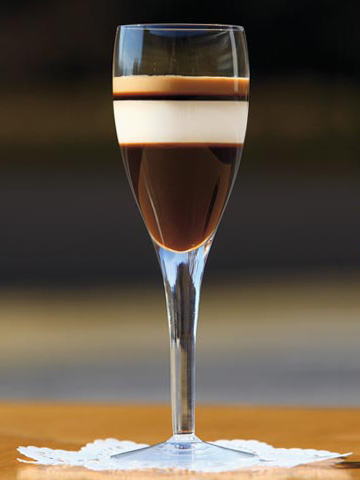
We take seventeen grams of a naturally grown, dark roasted coffee bean to make 100 cc of espresso. Then we layer this extraction with blanc manger and café au lait to create a sophisticated espresso jelly. The gorgeous four-layered glass starts with café au lait on top, followed by a bittersweet coffee cream, and finally a transparent layer of coffee on the bottom. The white blanc manger awaits you after the first bite. You forget the initial bittersweet flavor, which transforms into a soft, gentle sweetness that tickles your taste buds and spreads across your palate. Then... an incredible aroma is released. The bottommost layer of pure coffee reminds you, perhaps, of the first time you had this delicious beverage. This is the invigorating smooth flavor of espresso. This is how the idea of our jelly in a glass started.

One day, our long-awaited coffee beans from Brazil arrived to MIHO MUSEUM. These beans have been harvested from trees that were grown free of pesticides or fertilizers of any kind to create a wonderfully natural-tasting coffee. Although Pine View is a café that boasts its natural ingredients, it was difficult to find coffee growers that did not use pesticides or fertilizers. This ideal coffee has the clean, sharp taste that we long dreamed of serving our museum visitors. In the moment of excitement, an idea came to mind-- what if we created a coffee sweet for adults? The quality of naturally cultivated sugar had improved to the point that we also finally had sugar suited to make Western desserts.
Our dessert chefs thought of making something new and immediately began experimenting. Espresso ice cream, espresso cream puffs, and espresso flan… While the chefs each tried out different ideas, one chef came up with the liquids to make an espresso jelly. Then sugar and gelatin were dissolved into milk and added with cream to create blanc manger. The dark brown jelly syrup mixed with white blanc manger then became café au lait. Then we thought what would happen if we layered these?
The layers were poured into chilled glass flutes inside a large, refrigerator. The first layer was poured, followed by the second two hours later. The balance of the flavors was taken into consideration as the amount for the next layer was poured into the glass. The bottom layer of jelly must harden before the next layer can be added. Finally, after six hours, the finished product appeared. The mere combination of coffee, sugar, cream, and milk created an exquisite harmony. The espresso jelly was a great success.
The simple combination of quality ingredients can result in delicious products. Our dessert chefs suggested that perhaps the gods let them create this jelly.
